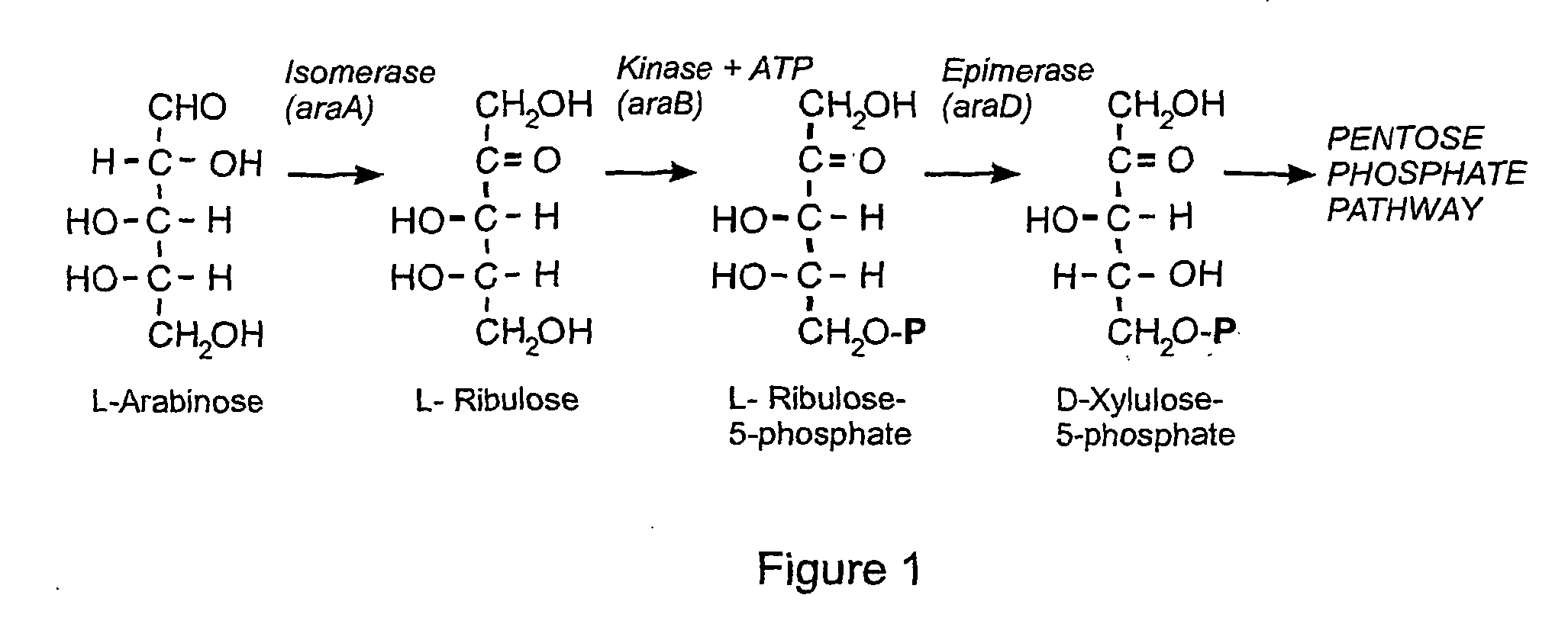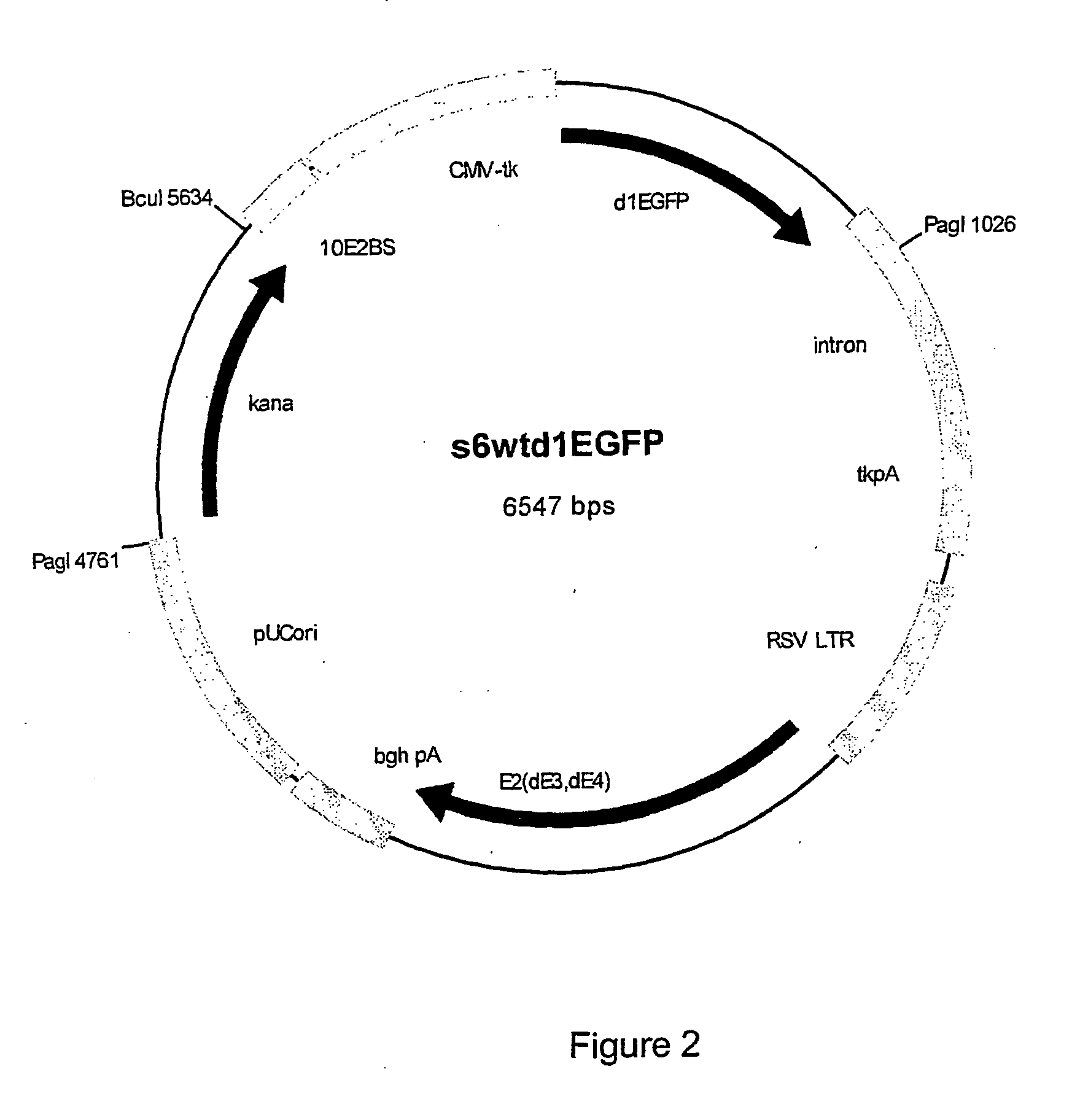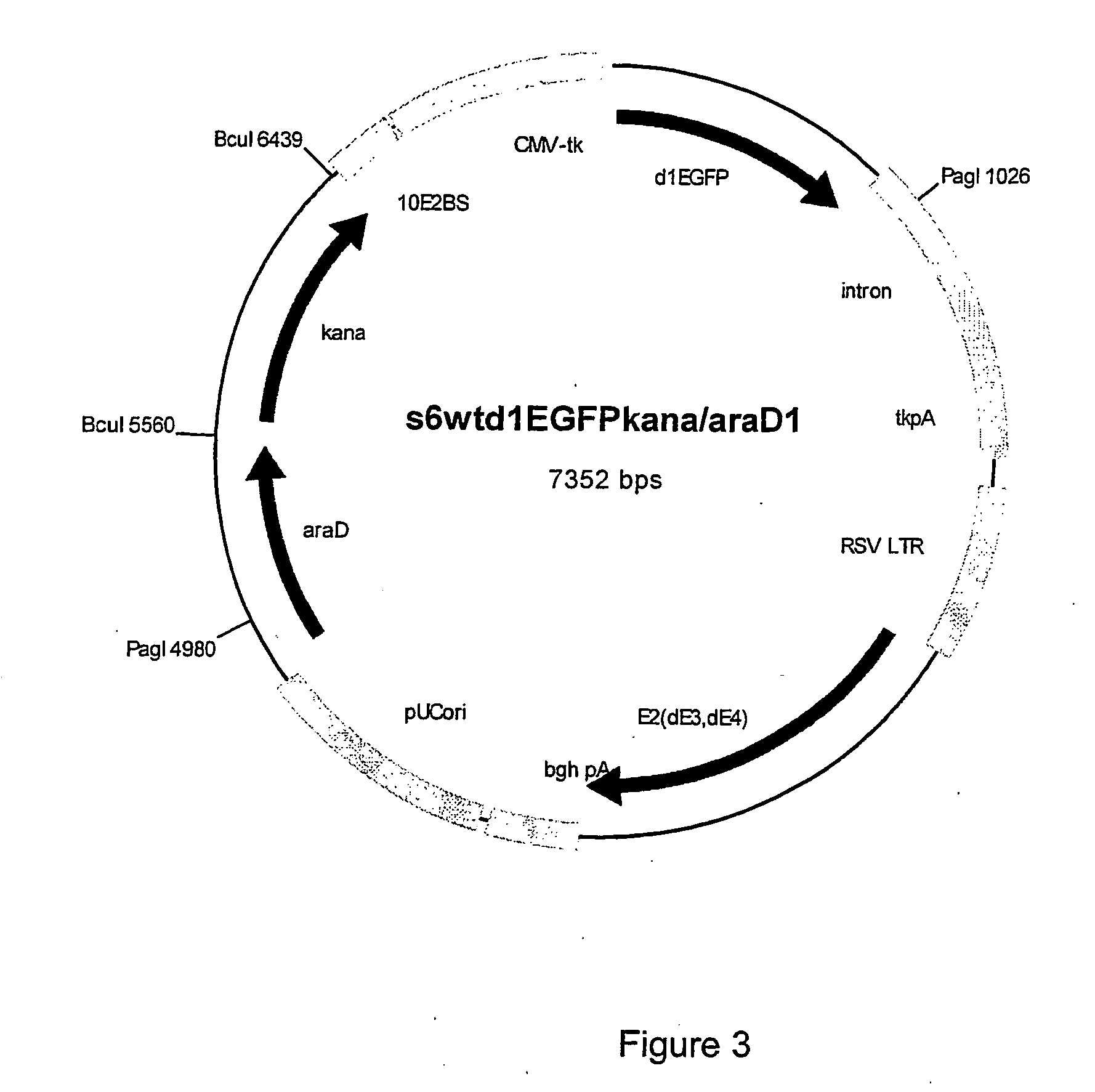Selection system containing non-antibiotic resistance selection marker
a selection system and non-antibiotic technology, applied in the field of new selection system, can solve the problems of antibiotic resistance genes, antibiotic resistance is a serious worldwide problem, antibiotic resistance cannot be used in the pharmaceutical industry, etc., and achieve the effect of safe use in production
- Summary
- Abstract
- Description
- Claims
- Application Information
AI Technical Summary
Benefits of technology
Problems solved by technology
Method used
Image
Examples
example 1
Cloning of araD Selection Plasmids
[0066] For cloning araD selection constructs plasmid S6wtd1EGFP (FIG. 2) was used. It has pMB1 origin of replication and kanamycin resistance marker as functional elements of plasmid backbone. The kanamycin resistance in this plasmid is conferred by gene that is derived from E. coil transposon Tn903.
[0067] The araD gene was amplified using polymerase chain reaction (PCR) from E. coli DH5a chromosome according to standard procedure. The PCR product was cloned into selected plasmids in two different orientations with the primer pairs s6araDL1+s6araDR1 or s6araDL1+s6araDR1, generating products named araD1 and araD2, respectively:
s6araDL1:(SEQ ID NO. 2)CGCCATGGTTCTCATGTTTGACAGCTTATCATCGATAAGCTTTAATGCGGTAGTTTAGCACGAAGGAGTCAACATG;
[0068]
s6araDR1:(SEQ ID NO. 3)CGCCATGGACTAGTAAAAAAAAGCCCGCTCATTAGGCGGGCTGTCATTACTGCCCGTAATATGC;
[0069]
s6araDL2:(SEQ ID NO. 4)CGCCATGGACTAGTTCTCATGTTTGACAGCTTATCATCGATAAGCTTTAATGCGGTAGTTTAGCACGAAGGAGTCAACATG;
[0070]
s6araDR2:(SEQ...
example 2
Cloning of Mutated araD Selection Plasmids
[0088] For cloning of mutated araD selection constructs plasmid p3hCG (FIG. 14) carrying kanamycin resistance [transposon Tn5 derived kanamycin resistance marker (neo) gene] was cleaved with the restriction endonucleases Bcul and Hindlll, the ends were filled in using Klenow Fragment (Fermentas, Lithuania) and the fragment with the size of 4647 bp was purified from the gel after agarose gel electrophoresis. The pMB1 origin of replication and the araD sequence carrying the C to T mutation, which results in a STOP codon in position 8 of the araD gene coding sequence, was excised from the plasmid paraDMgB (FIG. 15) with the restriction endonucleases Bcul and Eco52l, the ends were filled in using Klenow Fragment (Fermentas, Lithuania), and the DNA 5′-termini were dephosphorylated with Calf Intestine Alkaline Phosphatase (CIAP; Fermentas, Lithuania). The fragment with the size of 1532 bp was purified from the gel after agarose gel electrophores...
example 3
Construction of Arabinose Sensitive ΔaraD Escherichia coli Strains
[0091] Three E. coli strains, DH5alpha T1, AG1 and JM109, were used to construct ΔaraD mutants. The araD gene in E. coil genome was disrupted using the method described by Datsenko and Wanner [PNAS 97 (2000) 6640-6645]. This method exploits a phage A Red recombination system. Briefly, the strategy of this system is to replace a chromosomal sequence with a selectable antibiotic resistance gene that is generated by PCR by using primers with homology extensions. This is accomplished by Red-mediated recombination in these flanking homologies.
[0092] For transformation of the pKD46 (Datsenko and Wanner, supra), which encodes the phage λ recombination system, E. coli, the cells were made chemically competent using RF1 and RF2 solutions:
RF1 100 mlRbCl 11.2gMnCl2.4H2O0.99g1 M KAc pH 7.53mlCaCl2.2H2O0.15gGlycerol15gpH 5.8(add CH3COOH)
[0093]
RF2 100 ml0.5 M MOPS2mlRbCl0.12gCaCl2.2H2O1.1gGlycerol15gpH 6.8(add NaOH)
[0094] The ...
PUM
| Property | Measurement | Unit |
|---|---|---|
| temperature | aaaaa | aaaaa |
| concentrations | aaaaa | aaaaa |
| optical density | aaaaa | aaaaa |
Abstract
Description
Claims
Application Information
 Login to View More
Login to View More - R&D
- Intellectual Property
- Life Sciences
- Materials
- Tech Scout
- Unparalleled Data Quality
- Higher Quality Content
- 60% Fewer Hallucinations
Browse by: Latest US Patents, China's latest patents, Technical Efficacy Thesaurus, Application Domain, Technology Topic, Popular Technical Reports.
© 2025 PatSnap. All rights reserved.Legal|Privacy policy|Modern Slavery Act Transparency Statement|Sitemap|About US| Contact US: help@patsnap.com



